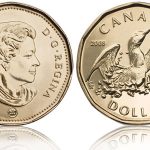British pound fell to daily lows against the US dollar on Thursday, after Bank of England maintained the current course of its monetary policy at todays meeting.
GBP/USD slipped to its lowest point today at 1.6056 at 12:00 GMT, after which consolidation followed at 1.6067, losing 0.06% for the day. Support was likely to be received at November 6th low, 1.6044, while resistance was to be met at October 29th high, 1.6143.
The Monetary Policy Committee at Bank of England (BoE) decided to leave the benchmark interest rate unchanged at the current record low level of 0.50% and the size of monetary stimulus at 375 billion GBP per month in line with expectations. The central bank has pledged that it will hold borrowing costs at a record low level until the rate of unemployment in the country falls below 7%. According to most recent data, currently the rate stays at 7.7%.
The decision on policy came after a series of strong economic data has been released out of the United Kingdom earlier in the week. Yesterday the index of industrial production was reported to have risen 0.9% in September compared to August, after the 1.1% drop in August compared to July. On annual basis, industrial output expanded 2.2% in September, after a drop of 1.5% recorded a month ago. Both figures outstripped expectations. Manufacturing output increased 1.2% in September on a monthly basis, eliminating the 1.2% drop in August, while in September 2013 compared to September 2012 production climbed 0.8%.
On Tuesday Markit Economics and the Chartered Institute of Purchasing and Supply (CIPS) reported that the index, gauging performance of the services sector in the UK, advanced to a reading of 62.5 in October, the highest point since May 1997, from 60.3 in September, while expectations pointed a slow down to 60.0 in October.
On Monday it became clear that the index, gauging construction activity in the United Kingdom, rose to a reading of 59.4 in October, or the highest level since September 2007, as in September it stood at 58.9.
All these data points fueled the notion that economic recovery in the country was indeed picking up the pace.
“The recovery that you’re seeing in the U.K. is very strong,” Jens Nordvig, managing director of currency research at Nomura Holdings Inc., Japan’s biggest brokerage, said in an interview on Bloomberg Television. “We really like long pound trades”.
The yield on UK benchmark 10-year gilts dropped 2.71%, after climbing to 2.74% on November 5th, or the highest level since October 22nd.
Elsewhere, the sterling was gaining against the euro, with EUR/GBP cross trading at 0.8406. GBP/JPY pair was dipping 0.05% on a daily basis to trade at 158.61. The pound has jumped 4.3% during the past six months, or the best performing currency among the 10 developed-nation currencies, tracked by Bloomberg Correlation-Weighted Indexes. The euro has climbed 3.7%, while the US dollar has recorded a slight change during the same period.





